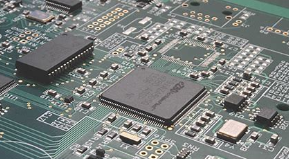Samsung’s technological breakthroughs and market recovery:
In recent times, Samsung has catapulted itself into the limelight with its 4nm process technology, notably in the realm of automotive chips, achieving a yield rate that has surged to approximately 70%. This notable leap has beckoned a myriad of companies, including Tesla, which is now poised to embrace mass production of its Hardware 5 computers over the next triennium. At the heart of this transformative journey is Samsung's relentless pursuit of process technology perfection coupled with a competitive pricing strategy. A pivotal moment was Lee Jae-yong’s strategic parley with Elon Musk, reinforcing Samsung’s vanguard position in the automotive chip market while unfurling the company's lofty ambitions and strategic blueprints in the high-performance computing sector. Amidst these developments, Samsung's iterative enhancements in process technology and its foray into the high-performance processor market underscore its burgeoning clout and influence in the global semiconductor arena.
TSMC competes with Samsung’s 3nm process:
2023 heralds a watershed moment for TSMC with its 3nm process, especially post the widespread integration into Apple’s latest phone models. Yet, the horizon is lined with growing tumult as Samsung unfurls its 3nm process technology, replete with full surround gate technology, signaling an unyielding resolve to hasten its pace in the technological marathon. This evolving dynamic vividly illustrates Samsung's relentless pursuit to diminish the technological chasm with TSMC and cement a robust foundation for the impending market skirmishes.
Samsung’s 2nm technology plan and industry outlook:
By the year 2025, it is anticipated that Samsung will spearhead the introduction of 2nm process technology, innovating with a back-side power supply to augment performance while curbing power dissipation. This stride is not merely a testament to Samsung's profound expertise and heritage in nano-process technology; it's a clarion call of its impending ascendance in the semiconductor market's competitive echelons. With a surge in transistor density and enhanced current control, the 2nm technology stands on the cusp of revolutionizing high-performance computing. This technological leap is set to catapult Samsung's market share and industry stature to unprecedented heights.

TSMC’s continued leadership and challenges:
TSMC, the titan of the global foundry landscape, continues to pour its resources into the crucible of new technology R&D and production prowess. However, the deceleration of Moore's Law, coupled with diminishing returns on investments and the quickened pace of competitors' advancements, casts a series of long shadows over its dominion. Despite holding the reins of market share, TSMC is navigating through a thicket of financial and technological quandaries, compelling a perpetual recalibration of its strategies to safeguard its pole position in the global semiconductor chessboard.
Changes in the industry structure: entry of new competitors:
The global foundry battleground is witnessing a seismic shift with the foray of new contenders like Intel, catalyzing a rapid evolution of technological norms and capacity expansion. This tumultuous change is not just stirring up the competitive fervor but is also seeding novel challenges and opportunities. Both TSMC and Samsung find themselves at a strategic crossroads, spurred to relentlessly innovate and expand their market footprint to stay ahead in the relentless competitive fray.
In summation, the global semiconductor tableau is marked by a dynamic interplay of multi-faceted competition and relentless technological evolution. Samsung's resurgence, TSMC's sustained supremacy, and the incursion of new market disruptors are collectively forging a landscape replete with both daunting challenges and ripe opportunities. As the technological tide surges and market needs morph, industry titans and nascent players alike are impelled to continually adapt and innovate, striving for dominance in the relentless global semiconductor showdown.
